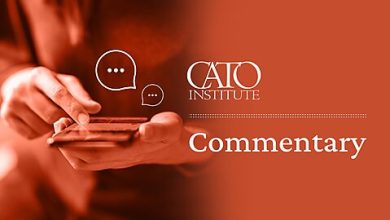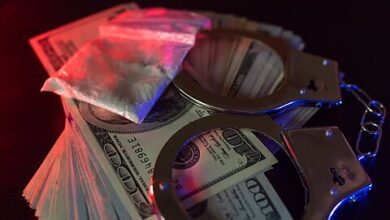Reifschneider and Wilcox’s Case for a Three Percent Inflation Target

In view of the Fed’s failure to achieve two percent inflation for much of the post-2007 period, the suggestion that it will find it easier to hit a higher target may well strike many as perverse—as if someone suggested that a pole vaulter unable to manage a six-meter vault should try for seven instead.
Yet in arguing that the Fed should raise its inflation target from two to three percent, former Federal Reserve Board economists David Reifschneider and David Wilcox aren’t just engaging in wishful thinking. On the contrary: as their recent Peterson Institute Policy Brief makes clear, bizarre as the plea for a higher inflation target may seem to some, “there is method in’t.” Indeed, were monetary policy reducible to a committing once and for all to a permanent inflation rate target, the case for having the Fed adopt a three percent target would be strong, and might be getting stronger.
But monetary policy isn’t just a matter of choosing the right long-run inflation rate target and sticking with it, for the simple reason that a fixed long-run inflation rate isn’t generally ideal. For this and other reasons, I conclude that the Fed can do better than follow Reifschneider and Wilcox’s advice.
Bottoming Out
Inspired mainly by Knut Wicksell’s great work Interest and Prices, economists have come to treat monetary stability—meaning the stability of money prices and other nominal magnitudes—as a matter of keeping actual interest rates at their “neutral” or “natural” levels. According to Wicksell himself, when actual, nominal rates coincide with their natural, real counterparts, the general price level will remain constant. Later economists, drawing on Irving Fisher’s work as well as on Wicksell’s, concluded that, to achieve a steady inflation rate of X percent, it sufficed, in theory, for central banks to keep their policy rates at the going, real natural rate of interest plus X percent.
In theory. Practice is another matter, not the least because “natural” interest rates can’t be observed. Instead, central bankers have to rely on various, imperfect estimates. Hence the tendency, or one of them, for inflation rates to wander off target. Central banks seeking to make up for such mistakes, so as to at least achieve a desired long-run or average inflation rate, and also to end recessions as quickly as possible, must compensate for such misses by temporarily setting their rate targets above or below prevailing natural rate levels. During recessions, for example, central banks have often found it necessary to reduce their rate targets by five percentage points or more, or well below where they’d set them were they to let bygones be bygones.
Central banks found it challenging enough to hit their inflation targets before 2007. But since then they’ve faced a new challenge, namely, a persistent, global decline in the real natural rate. According to some estimates, that decline actually drove the natural rate below zero for an extended period, and may do so again in the future. Here, for example, is a chart showing U.S. real natural rate estimates, with confidence intervals, from a 2015 report by Vasco Cúrdia, a research advisor at the San Francisco Fed:
And here are nominal natural rate (“R-star”) estimates by the late Thomas Laubach, formerly of the Federal Reserve Board, and New York Fed President John Williams, alongside CBO estimates of the U.S. economy’s trend real growth rate:
Although the Laubach-Williams series never quite reaches zero, the lower 70 and 90 percent confidence intervals for it dropped into negative territory for much of the Great Recession period. And even if the natural rate stayed positive, when spending and prices collapsed, presumably because the Fed had kept rates too high for too long, negative rate settings were still called for, in theory, to quickly restore the price level, and economic activity generally, to their pre-recession trends.
The Zero Lower Bound
Though theory may call for negative policy rates, setting such rates can prove difficult in practice. And although several central banks have now resorted to negative rates, the Fed hasn’t, in part because Fed officials aren’t sure it can do so legally. Consequently, the Fed has in practice been limited to rate settings of zero or higher.
This constraint on the Fed’s rate settings is what economists have in mind when they refer to the “zero lower bound” problem. The lower natural interest rates go, the more likely it is that the zero lower bound will become binding. When that happens, the Fed has to settle for a rate target setting above the theoretical ideal. It’s during these circumstances, both during the Great Recession and during the recent COVID-19 crisis, that the Fed has felt obliged to resort to “unconventional” monetary policies, including Quantitative Easing and promises to keep its rate target settings at or very close to zero for an extended length of time.
Seen in light of the zero lower bound problem, the case for raising the Fed’s inflation target appears straightforward rather than paradoxical: the higher the target rate of inflation, the higher the nominal target rate (or R-star) settings consistent with it, and the less likely the zero lower bound will ever bind. Of course, with a binding zero lower bound, getting to the higher target may not be possible. But the idea isn’t to get there while the zero lower bound is binding: it’s to get there once it isn’t. Hence, the pole-vaulting analogy doesn’t fit.
As Reifschneider and Wilcox note, moving to a three percent inflation target might be considered a very conservative reform, since it would only partially compensate for the still greater estimated post-2007 decline in the real natural rate. But the change would go a long way toward reducing the risk of both recessions and slower-than-necessary recoveries, and reducing that risk may well be worth the costs of higher inflation:
Once inflation expectations and trend inflation had [sic] fully adjusted to the new policy, a higher target would result in a one-for-one increase in the average level of nominal interest rates, thereby giving the FOMC that much more room to cut the funds rate during recessions. Research suggests that in the long run, the additional running room provided by even a modest increase in the target rate would materially reduce economic volatility. Although a modest increase in the inflation target would almost certainly leave the funds rate still periodically pinned at the effective lower bound, the FOMC would nonetheless be better positioned to foster full employment and stable inflation in the future.
Reifschneider and Wilcox make clear that they are calling for a once-and-for-all change in the Fed’s inflation target, and not for a policy that could cause the public’s inflation expectations to become unanchored by allowing for further changes. To rule out that possibility, they would have the FOMC assure the public “that it will act forcefully to keep actual and expected inflation from rising permanently above three percent and follow[ ] through on that pledge.”
Transitional Gains?
Although the zero-lower-bound problem is the reason most often given by proponents of a higher inflation target, Reifschneider and Wilcox’s brief offers a second reason, to wit: that, besides making it easier for the Fed to avoid recessions, switching to a higher inflation target could yield other, transitional gains.
Using the Federal Reserve Board’s FRB/US model, Reifschneider and Wilcox conclude that, over the course of 15 years following the switch to a three percent target, U.S. real GDP could be boosted by as much as 3.4 percent, while unemployment could decline as much as 1.4 percentage points. The gains vanish, however, as the public’s inflation-expectations adjust to the new policy. Those gains depend, in other words, on the extent to which the move to a higher equilibrium inflation rate takes people by surprise. This result is hardly surprising in view of the New-Keynesian spirit of the FRB/US model, with its assumption that, instead of instantly adjusting to their general-equilibrium levels, money prices and wage rates respond slowly to changes, or at least to unanticipated changes, in aggregate demand.
But even granting that prices are sticky, and that the switch to a higher inflation target comes as a surprise, there are good reasons for doubting that the short-run gains in employment and output predicted by the FRB/US model are worth pursuing. One reason is simply that the gains in question aren’t really gains at all: instead they result from what Reifschneider and Wilcox elsewhere (properly) characterize as the “over-utilization” of labor and capital resources .
A second reason for not treating the transitional gains predicted by the FRB/US model as a reason for switching to a higher inflation rate is that, for all its sophistication, that model, and similar ones used by other central banks, isn’t able to capture the potentially serious adverse consequences of an unexpectedly easy monetary policy—consequences quite apart from the mere coaxing of more labor hours from a hapless labor force. In particular, as Winston Dou and his colleagues point out in their recent survey of such models, it lacks “the analytical specificity to account for important financial sector influences on the aggregate economy.” That lack of specificity—including the lack of any role for financial intermediaries to play—became notorious in the wake of the 2008 financial crisis, which made it all too clear that such models “fail to fully account for an important source of aggregate fluctuations, such as systemic risk from the financial system.”[1]
One needn’t be Chicken Little, or a proponent of the Austrian business cycle theory, to believe that, by increasing the risk of a financial crisis, an unexpected Fed switch to a higher inflation target could actually result in less rather than more transitional employment and output. Reifschneider and Wilcox themselves admit that this possibility “cannot be dismissed, even if it is temporary.” But they consider the risk is worth taking, because “once the economy fully adjusts to the new policy,” it will enhance rather than reduce financial instability by avoiding the zero lower bound problem.
Perhaps. But even if the long-run gains from a raised inflation target might made up for the costs of a transitional crisis, that hardly makes the risk worth taking if it can be avoided. On the contrary: instead making the switch to a higher target as surprising as possible, on the chance that doing so might producer greater gains, the prudent course would be for Fed officials to do all they can to prepare the public for the change. That approach would secure the certain long-run gains from the switch without any risk of shorter-term losses. But as it would also rule-out any prospect of short-term transitional gains from switching to a higher inflation target, those gains shouldn’t be reckoned among the benefits to be had from such a switch.
Drifting Away
Reifschneider and Wilcox also claim a third advantage for a three percent inflation target. This is that
if, contrary to current projections, trend inflation were to shift up to a level well above 2 percent, as it would reduce the need for tight monetary policy (and thus reduced employment) to push inflation back down.
As I noted on Twitter recently, this argument for a three percent target also strikes me as unsound, for it might serve as an excuse for raising the Fed’s inflation target any time trend inflation rises well above that target for any reason. Suppose, for example, that the Fed, having adopted a three percent target, finds that trend inflation has risen to 4 percent. In that case, by setting its target at four percent, the Fed could avoid having to tighten to push inflation back down. Because bringing inflation down when it rises above target is never costless, the same logic applies for any positive trend increase. It follows that, consistently applied, the argument is really a recipe for an upward-drifting inflation rate.
When I made this observation on Twitter, Peterson Institute President Adam Posen dismissed it as a “slippery slope” argument, and I confess that my tweets lent themselves to that interpretation. In fact, I’m not especially worried that, if the Fed does raise its target to three percent, it’s likely to end up raising it to four percent, and so on. My real point was and remains that, in making the argument in question, Reifschneider and Wilcox have themselves fallen victim to a logical fallacy, namely, the fallacy of proving too much. One might well argue that, should trend inflation rise to three percent, that it would be an opportune time for the Fed to raise its target to that level. But that is not the same as making the increase in trend inflation a good reason for the Fed to raise its target.
An Ideal Solution
If the novel reasons Reifschneider and Wilcox offer for raising the Fed’s inflation target aren’t compelling, we are left with the more conventional argument that switching to a three percent target would reduce the risk of recessions, and of the Fed’s lacking the capacity to counter them, by raising the average gap between the Fed’s rate settings and the zero lower bound constraint.
But this more conventional argument itself appears compelling only assuming that monetary policy is a matter of picking a long-run inflation target and sticking to it; and that, having declined since 2007, real natural interest rates have now reached a new, lower level that can be expected to prevail for some time to come.
Neither of these assumptions seems warranted. Some of the factors responsible for the decline in natural rates, such as lowered total factor productivity, may not be permanent, while others might continue to reduce those rates still further. And as popular as inflation targeting has become among central banks, either in its older, strictly forward-looking version or in versions designed to make up past misses, there are other monetary policy options that allow the long-run inflation rate to vary, not because of mistakes, but deliberately.
And Something Close
Were natural rates observable, implementing such an ideal policy would be a cinch. But because they aren’t, the question becomes whether something close to it, or at least better than Reifschneider and Wilcox’s proposed, permanent three percent inflation target, is possible. I think it is, and it’s called nominal GDP (or simply NGDP) targeting.
An NGDP-targeting Fed would strive to achieve, not a stable inflation rate, but a stable path for nominal spending on final goods and services. As with inflation targeting, NGDP targeting comes in different versions. One of them—NGDP growth rate targeting—is strictly forward-looking. Another—NGDP level targeting—would have the Fed make up for past target misses, so as to maintain a definite, long-run NGDP growth rate.
Though there are many advantages to NGDP targeting, my concern here is only with its merits compared to a permanent three percent inflation target as a means for avoiding the zero lower bound problem.[2] For the sake of that comparison, we can abstract from the difference between NGDP growth rate and NGDP level targeting by assuming that the Fed never fails to hit its NGDP growth rate target. Let’s also assume that, at the time of its implementation, the economy’s potential real growth rate is two percent, so that a policy aimed at keeping NGDP on a five percent growth path will initially result in a three percent rate of inflation.
Evidently, under this policy, changes in the economy’s potential real growth rate will lead to opposite percentage-point changes in the equilibrium inflation rate. But those same changes tend to lead to roughly identical changes in the real natural rate of interest, as can be seen in the figure below (from an FRB San Francisco Research Letter by Kevin Lansing). Far from being a coincidence, this tendency is just what the neoclassical theory of the determinants of the natural rate posits. It follows that, under NGDP targeting, the inflation rate would tend to adjust automatically to opposite changes in the real natural rate, thereby helping to maintain a stable gap between the nominal natural rate and the zero lower bound.
I conclude that, though there may well be genuine gains to be had from switching to a three percent inflation target given current estimates of the natural interest rate, whatever that switch might accomplish, a switch to NGDP targeting can also accomplish, though with better longer-term results. This is so, moreover, even setting aside other advantages of NGDP targeting relative to any sort of inflation targeting.
______________________
[1] The FRB/US model allows for the existence of a financial sector only to the extent of including equations for several interest rates and stock prices; and with respect to these it abstracts entirely from frictions: asset prices are assumed to adjust continuously to their general equilibrium values.
Although the FRB/US model has been revised since the 2008 crisis, the revisions don’t address its superficial treatment of the financial sector.
[2] The literature on NGDP targeting is now vast. For accounts of its main advantages see, besides Scott Sumner’s article linked above, David Beckworth’s articles on its financial stability advantages and on the particular merits of NGDP level targeting. For a more basic primer see my “Stable Spending Catechism.”
The post Reifschneider and Wilcox’s Case for a Three Percent Inflation Target appeared first on Alt-M.





